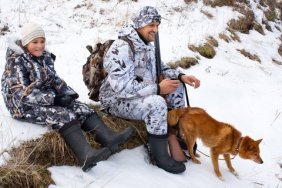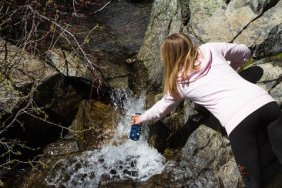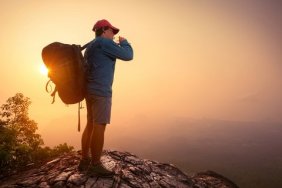 The landscapes that make up this country—the Grand Canyon, or the Appalachian Trail, for example—are some of the most beautiful on the planet. Those who are able to visit such places can remember their experiences forever with photos, so a camera is always a great item to bring along on your trips. This country’s terrain can be rough on a camera, though, so keeping it safe while still preserving your memories is key. Here are a few tips on how to do this.
The landscapes that make up this country—the Grand Canyon, or the Appalachian Trail, for example—are some of the most beautiful on the planet. Those who are able to visit such places can remember their experiences forever with photos, so a camera is always a great item to bring along on your trips. This country’s terrain can be rough on a camera, though, so keeping it safe while still preserving your memories is key. Here are a few tips on how to do this.
First things first, you should always carry your camera in a padded case, which will protect it against scratches, dirt, or water. I know it might seem easier and less time consuming to simply wear it around your neck from the strap, but this does nothing to protect it should you slip and fall. There are smaller padded cases that can be worn around your neck, so all you have to do its unzip and pull your camera out, so keep that in mind when it comes to carrying your own. Furthermore, you can pick up a rain fly to add more protection from water or dirt.
To keep your case from damaging your camera, be sure to clean it often. Wash your case in gentle cycle, with no soap and the zippers open. Allow it to air dry once it’s been washed.
One further way to protect the lens from scratches is to keep a filter attached to it. Yes, your filter will still get scratched if something happens, but at least your camera lens won’t.
When it comes time to change a lens, keep the camera close to you, and your body between your camera’s inner workings and the wind. This will keep any particles, water, or bugs from getting inside and causing any damage.
When you’re resting or at camp, it’s smart to rest your camera case on something, rather than simply leaving it on the ground. By putting it on your backpack or hanging it from a tree, you’ll ensure that it doesn’t get wet or dirty.
If your camera does get dirty, use a damp cloth to wipe it down and collect any dirt or sand. Contrarily, use a dry cloth to gently wipe away any moisture or water that may collect on the camera’s body. If your camera does get wet, though, you can put it in a ziplock bag with dry paper towel or toilet paper, then do your best to get all the air out of the bag before sealing it. Doing this will actually draw any moisture out of the camera.
Taking a camera along on a hiking or camping trip is a great way to preserve those experiences and discoveries forever. However, your camera needs to be protected as you make your way across some of the country’s most rugged terrain. The tips outlined above will go a long way towards keeping your camera safe when you hit the trail!








